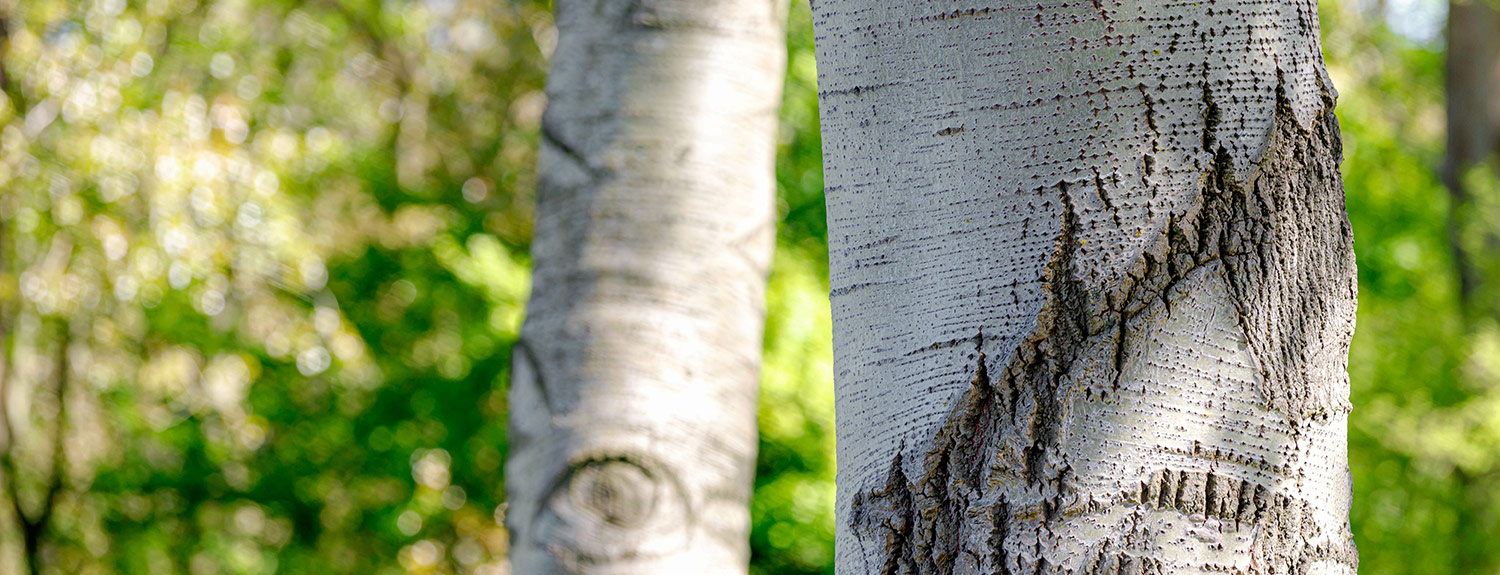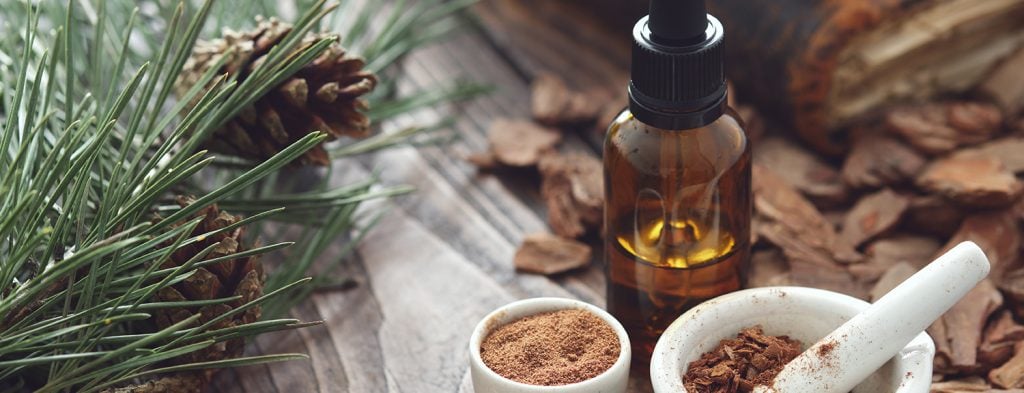Betula Alba (Birch) Bark Extract
Betula alba is a species of deciduous tree with many common names, including downy birch, white birch, and hairy birch. It is native and abundant throughout northern Europe and northern Asia.
The outer layer of bark can be stripped off without killing the tree and can be used for numerous purposes, including the production of roofing tiles, rope, charcoal, bread, etc.

In skin care products, Betula alba bark extract functions as an astringent since the bark contains a high concentration of tannins. Tannins are phenolic compounds rich in hydroxy residues that impart astringent properties, resulting in a constricting and drying effect when applied to the skin. They work by cross-linking with proteins in the skin known as keratins, creating an invisible film that can temporarily degrease skin, tighten and tone skin, and minimize the appearance of enlarged pores. Lastly, the tannins in Betula alba bark extract function as antioxidants, using their hydroxyl groups to catch free radicals and stabilize them in the phenolic ring.
Mimosa tenuiflora (Jurema) Bark Extract
Mimosa tenuiflora, also known as Jurema Preta or Tepezcohuite, is a perennial tree or shrub native to Brazil and Mexico. Extracts from the bark of this tree are believed to have valuable skin care properties since the bark is a rich supply of beneficial nutrients, including saponins, lipids, tannins, xylose, and flavonoids.
The saponins in Mimosa tenuiflora bark extract function as natural surfactants, which help to cleanse dirt and oil from the skin. Lipids replenish the skin’s barrier function and thereby help the skin better retain moisture. Tannins are astringent molecules with the ability to temporarily tone and tighten the skin, as well as degrease oily skin. Xylose is another component of Mimosa tenuiflora bark extract that can hydrate the skin by attracting water. Lastly, the flavonoids in Mimosa tenuiflora bark extract function as antioxidants, protecting the skin from the free radicals that can cause premature skin aging.
Rhizophora mangle (Red Mangrove) Bark Extract
Rhizophora mangle, also known as the red mangrove, is a woody, salt water-tolerant plant that grows in tropical and subtropical coastal areas throughout the world. Extracts from the bark of the red mangrove have been used in folk remedies for centuries, treating conditions such as sore throat, fungal infections, fever, tuberculosis, and many more. The bark contains several active constituents, including polyphenols, carbohydrates, fatty acids, and sterols.
Red mangrove bark extract possesses antimicrobial, anti-inflammatory, and potent antioxidant activity. As an antioxidant, this extract protects the skin from harmful free radicals that can cause premature skin aging. It is also believed that the antioxidant activity of red mangrove bark extract assists in wound healing. Studies have shown that it can increase skin elasticity, as well as help reduce the appearance of fine lines and wrinkles. Due to these properties, red mangrove bark extract is often used in anti-aging skin care products.
Cedrus Atlantica (Atlas Cedar) Bark Oil
Cedrus atlantica, also known as the Atlas cedar, is a cedar tree native to the Atlas Mountains of Morocco. Atlas cedar bark oil is extracted from wood chips and sawdust that come from furniture making. This oil is commonly used as a fragrance ingredient in personal care products, such as deodorants and scented soaps, due to its sweet, woody and mildly camphoraceous odor.
In addition to its pleasant fragrance, Atlas cedar bark oil provides several benefits when applied to the skin. For example, it has antibacterial activity and can help reduce oiliness, which are both excellent properties for the prevention and treatment of acne. Atlas cedar bark oil also has astringent properties, which helps to temporarily tone and tighten the skin. Lastly, Atlas cedar bark oil functions as a natural insect repellent, particularly against mosquitoes, mites, and moths.
Quillaja Saponaria Bark Extract
Quillaja saponaria, also known as the soap bark tree, is an evergreen tree native to warm temperate central Chile. Quillaja saponaria bark extract is produced by aqueous extraction of the milled inner bark. After harvesting the logs and bark, the external part of the bark is removed. Then, the inner bark is treated with hot water to obtain the extract.
Quillaja saponaria bark extract contains saponins, which are a class of chemical compounds that can act as natural surfactants. They also have a distinctive foaming characteristic and foam considerably when shaken in water. These qualities make Quillaja saponaria bark extract an excellent ingredient for foaming body washes and face cleansers.
Hamamelis virginiana (Witch Hazel) Bark Extract
Hamamelis virginiana, also known as witch hazel, is a species of flowering shrub native to eastern North America. The leaves, bark, and twigs of this plant are processed to create a clear liquid that’s sold commercially as witch hazel. Witch hazel is widely known for easing inflammation and soothing sensitive skin. Witch hazel bark extract consists of the dried bark of the trunk and branches of Hamamelis virginiana and is used in skin care products because it is a source of several types of antioxidants, including tannins. The bark contains 8 to 12% tannins.
Tannins are phenolic compounds rich in hydroxy residues that impart astringent properties, resulting in a constricting and drying effect when applied to the skin. They work by cross-linking with proteins in the skin known as keratins, creating an invisible film that can temporarily degrease skin, tighten and tone skin, and minimize the appearance of enlarged pores. Unfortunately, tannins can cause sensitization reactions with some people. Furthermore, most of the available witch hazel preparations contain between 14% and 15% denatured alcohol, which can be damaging to the skin.
Berberis Vulgaris Bark Extract
Berberis vulgaris, also called barberry, is a shrub that is known for its yellow-colored twigs and edible but sharply acidic berries. The barberry plant has been used in Indian, European, and Native American cultures for treating various health issues such as diarrhea, fever, and diseases of the liver, gallbladder, and more.
Berberis vulgaris bark extract also provides several skin benefits, mainly due to the active component berberine. Berberine is an alkaloid that is known to possess anti-inflammatory, antioxidant, antibacterial, and antifungal properties.

Salix Alba (Willow) Bark Extract
Salix alba, also known as the white willow, is a species of willow tree native to Europe and western and central Asia. The name “white willow” derives from the white tone to the undersides of the leaves. During harvesting, the strips of the willow bark are removed from the tree. Then, the inner bark is processed to remove the beneficial aqueous extract. Willow bark extract has been used for centuries for minor pain-relieving purposes and to soothe irritated skin.
The medicinal and skin care benefits of willow bark extract primarily come from its rich supply of salicin. Salicylic acid, a common beta hydroxy acid used in skin care products, is derived from salicin. Salicin provides exceptional anti-inflammatory properties that have been shown to reduce the appearance of pores and wrinkles, as well as even out skin tone while increasing skin firmness. In addition to salicin, willow bark extract has a high concentration of tannins, phenolic acids, flavonoids, and various minerals. All of these components work to soothe the skin and aid in cell regeneration, which promotes a more healthy, youthful complexion.







